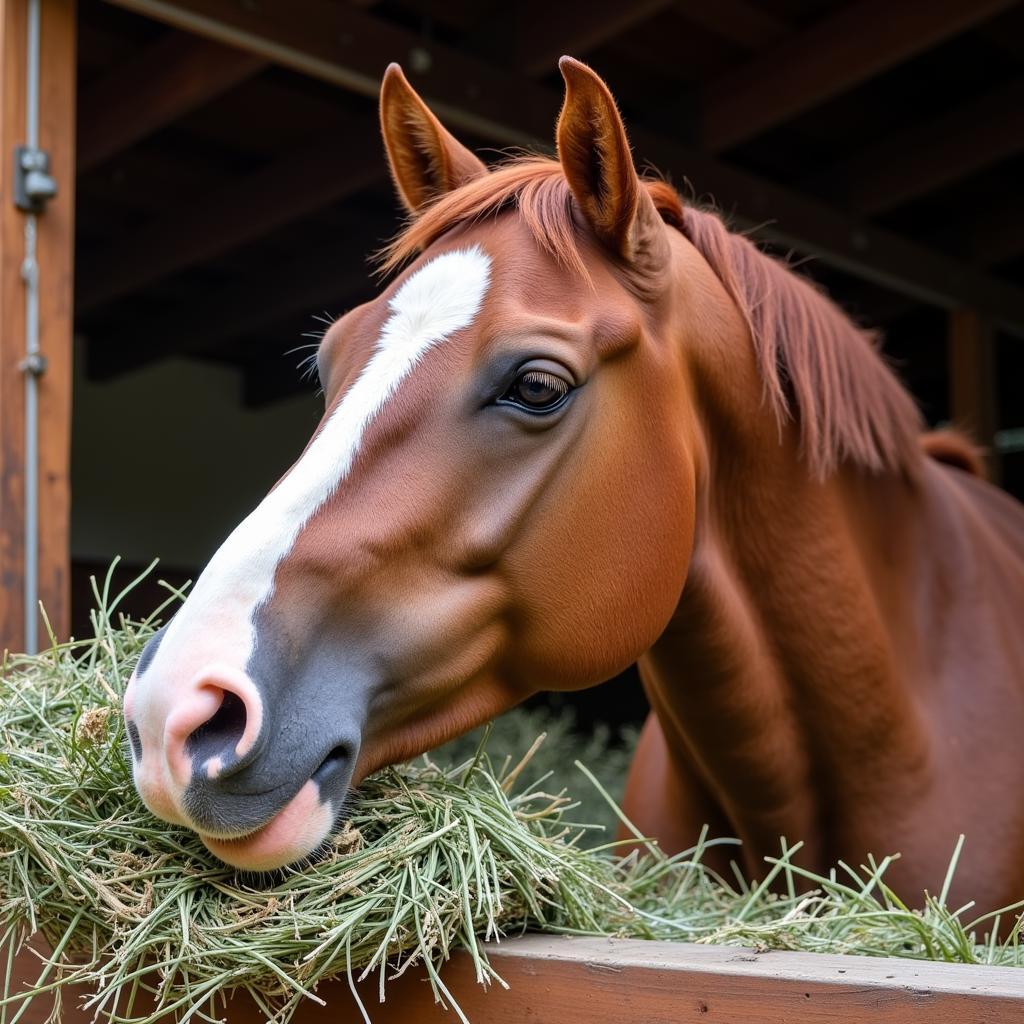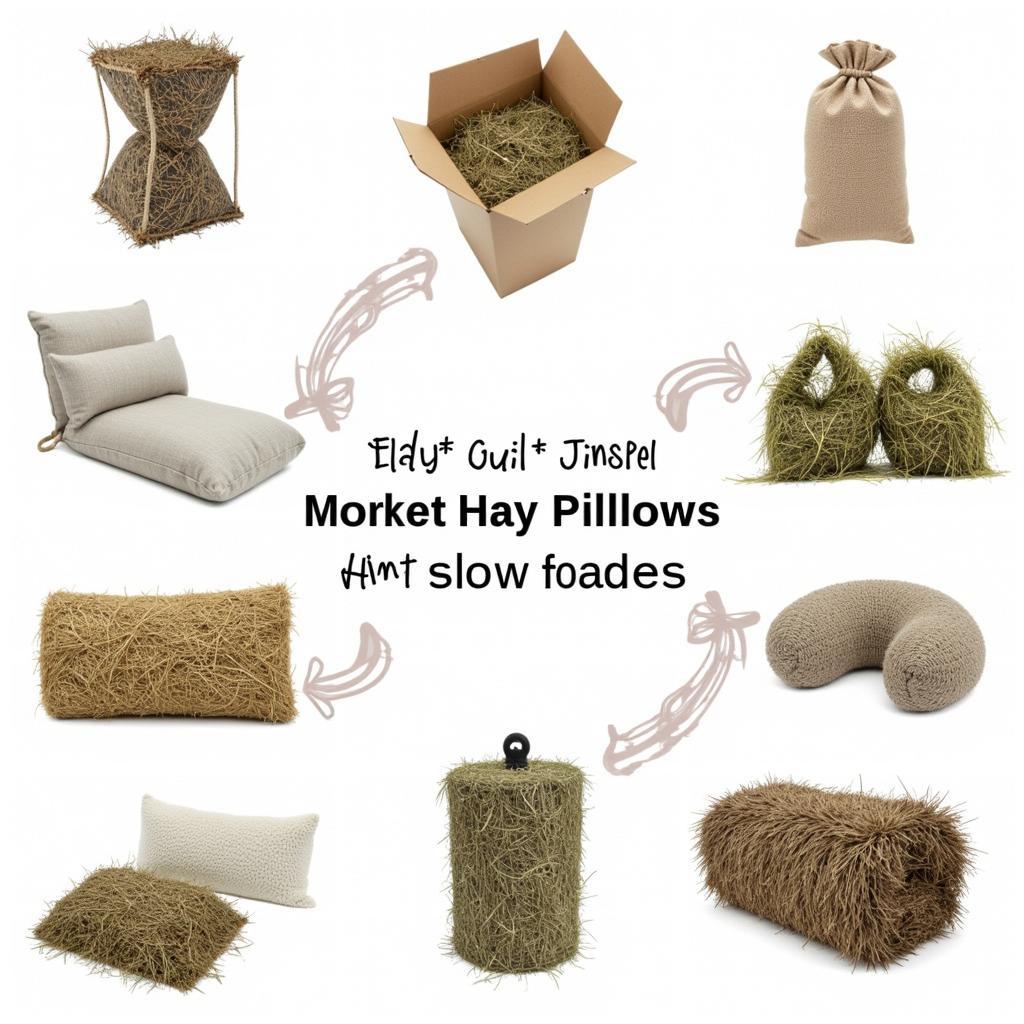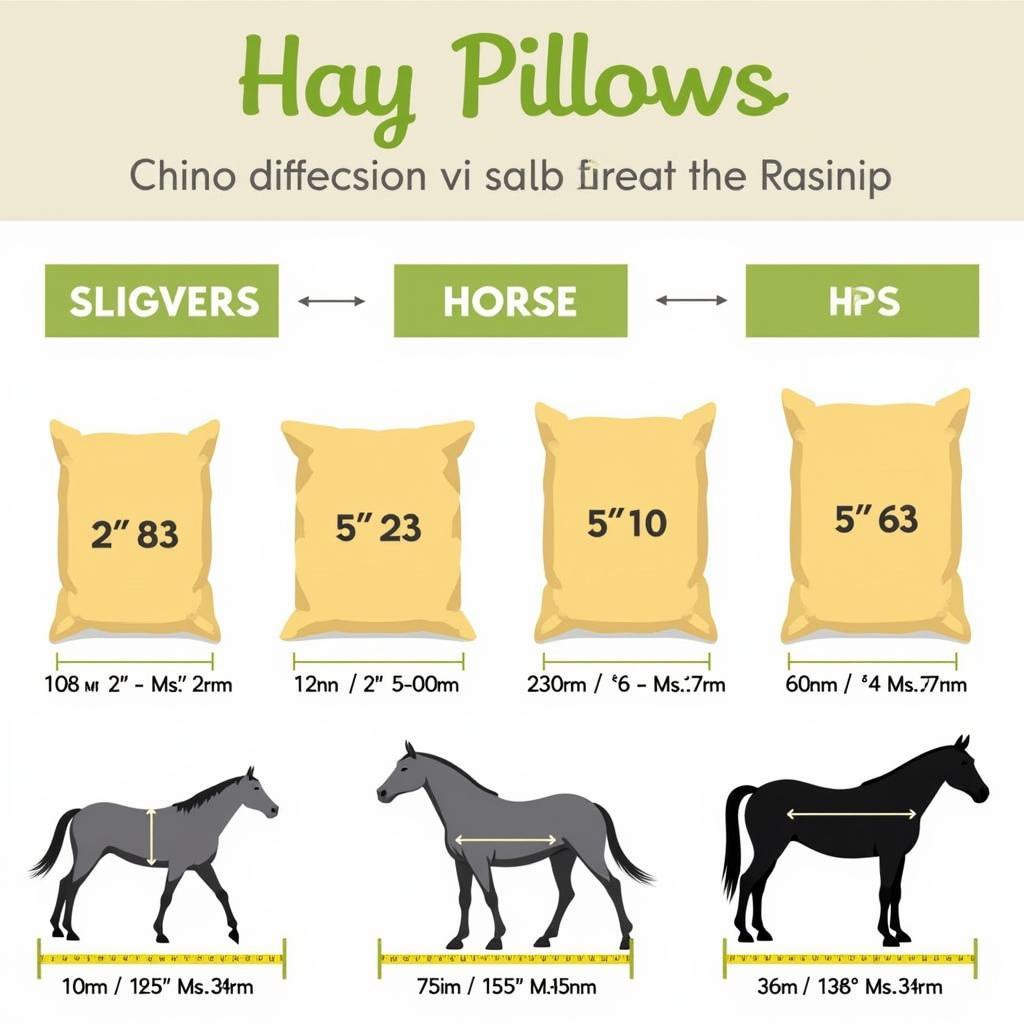Hay pillows have become increasingly popular in recent years, offering a convenient and contained way to provide horses with their favorite forage. But with so many options available, it can be overwhelming to choose the right hay pillow for your equine companion. This comprehensive guide will delve into everything you need to know about hay pillows for horses, helping you make an informed decision that benefits both you and your horse.
Understanding the Benefits of a Hay Pillow for Your Horse
 Benefits of Hay Pillows for Horses
Benefits of Hay Pillows for Horses
Before we explore the different types of hay pillows, let’s first understand why they’ve become a staple for many horse owners:
- Reduced Waste: Hay pillows help minimize hay wastage, which is a common problem with traditional hay feeding methods. The enclosed design prevents horses from scattering hay around their stalls or pastures.
- Promote Slow Feeding: Hay pillows prolong feeding time, encouraging horses to eat at a more natural and healthy pace. This is especially beneficial for horses prone to bolting their food or those requiring a controlled diet.
- Cleanliness and Hygiene: Keeping hay contained within a pillow helps maintain a cleaner feeding area, reducing the risk of contamination from dirt, debris, and parasites.
- Convenience for Owners: Hay pillows offer a convenient feeding solution, especially for traveling, shows, or simply streamlining daily chores.
Types of Hay Pillows: Finding the Perfect Fit for Your Horse
 Different Types of Hay Pillows Available for Horses
Different Types of Hay Pillows Available for Horses
Hay pillows come in a variety of shapes, sizes, and materials. Understanding the differences is crucial to selecting the best option for your horse’s needs:
1. Hay Bags:
- Description: Typically made from durable nylon or mesh, hay bags are a popular and affordable option. They come in various sizes to accommodate different amounts of hay.
- Pros: Affordable, lightweight, easy to hang in stalls or trailers.
- Cons: May not be as durable as other options, some horses might find it challenging to extract hay from smaller holes.
2. Hay Nets:
- Description: Similar to hay bags but made with larger openings, often using a net-like structure.
- Pros: Allows for easier access to hay compared to bags with small holes, promotes slower feeding.
- Cons: Can be rough on a horse’s muzzle if not chosen carefully, might not be suitable for horses with dental issues.
3. Slow Feed Hay Pillows:
- Description: Specifically designed to slow down hay consumption, these pillows often feature small openings or intricate patterns that make it more challenging for horses to access the hay.
- Pros: Ideal for horses prone to overeating or those requiring weight management, encourages natural grazing behavior.
- Cons: Can be more expensive than other options, some horses might get frustrated with the restricted access.
4. Material Considerations:
- Nylon: Durable, easy to clean, but can be less breathable.
- Mesh: Offers good ventilation, but might not be as durable as nylon.
- Rubber: Durable and easy to clean, often used in slow feeders, but can be heavier.
Choosing the Right Size and Hole Size
 Selecting the Appropriate Hay Pillow Size for Your Horse
Selecting the Appropriate Hay Pillow Size for Your Horse
The size of the hay pillow and the size of the feeding holes are crucial factors to consider:
- Size: Choose a size that comfortably holds enough hay for one or two meals, depending on your horse’s feeding schedule.
- Hole Size: Smaller holes promote slower feeding, which is ideal for easy keepers or horses prone to digestive issues. Larger holes are suitable for horses who are more efficient eaters or those who don’t require restricted feeding.
Expert Insights:
“When choosing a hay pillow, always prioritize your horse’s safety and comfort,” advises Dr. Emily Carter, a renowned equine veterinarian. “Ensure the material is non-toxic and free of any sharp edges. Regularly inspect the pillow for signs of wear and tear and replace it when needed.”
Conclusion: Making the Right Choice for Your Equine Friend
Selecting the right hay pillow can significantly impact your horse’s health and well-being. By considering their individual needs, feeding habits, and your lifestyle, you can find the perfect hay pillow that simplifies feeding time while ensuring your horse receives the optimal amount of forage.
Frequently Asked Questions about Hay Pillows for Horses
1. Can I leave a hay pillow with my horse unsupervised?
Yes, you can generally leave a hay pillow with your horse unsupervised, but it’s essential to choose a safe and durable option and to monitor your horse’s behavior initially.
2. How often should I clean my horse’s hay pillow?
It’s recommended to clean the hay pillow at least once a week, or more frequently if it becomes soiled.
3. Can I use a hay pillow for grazing muzzles?
No, hay pillows are not designed for use with grazing muzzles.
4. Are hay pillows suitable for all horses?
Hay pillows can be beneficial for most horses, but it’s essential to choose the right type and size based on your horse’s individual needs and consult with your veterinarian if you have any concerns.
Need More Help?
For personalized advice on choosing the best hay pillow for your horse, contact our expert team at Justus Horses USA. We’re available 24/7 to assist you. Call us at 0772127271, email us at [email protected], or visit our location at QGM2+WX2, Vị Trung, Vị Thuỷ, Hậu Giang, Việt Nam.
Explore our website for more informative articles on horse care, feeding, and management.